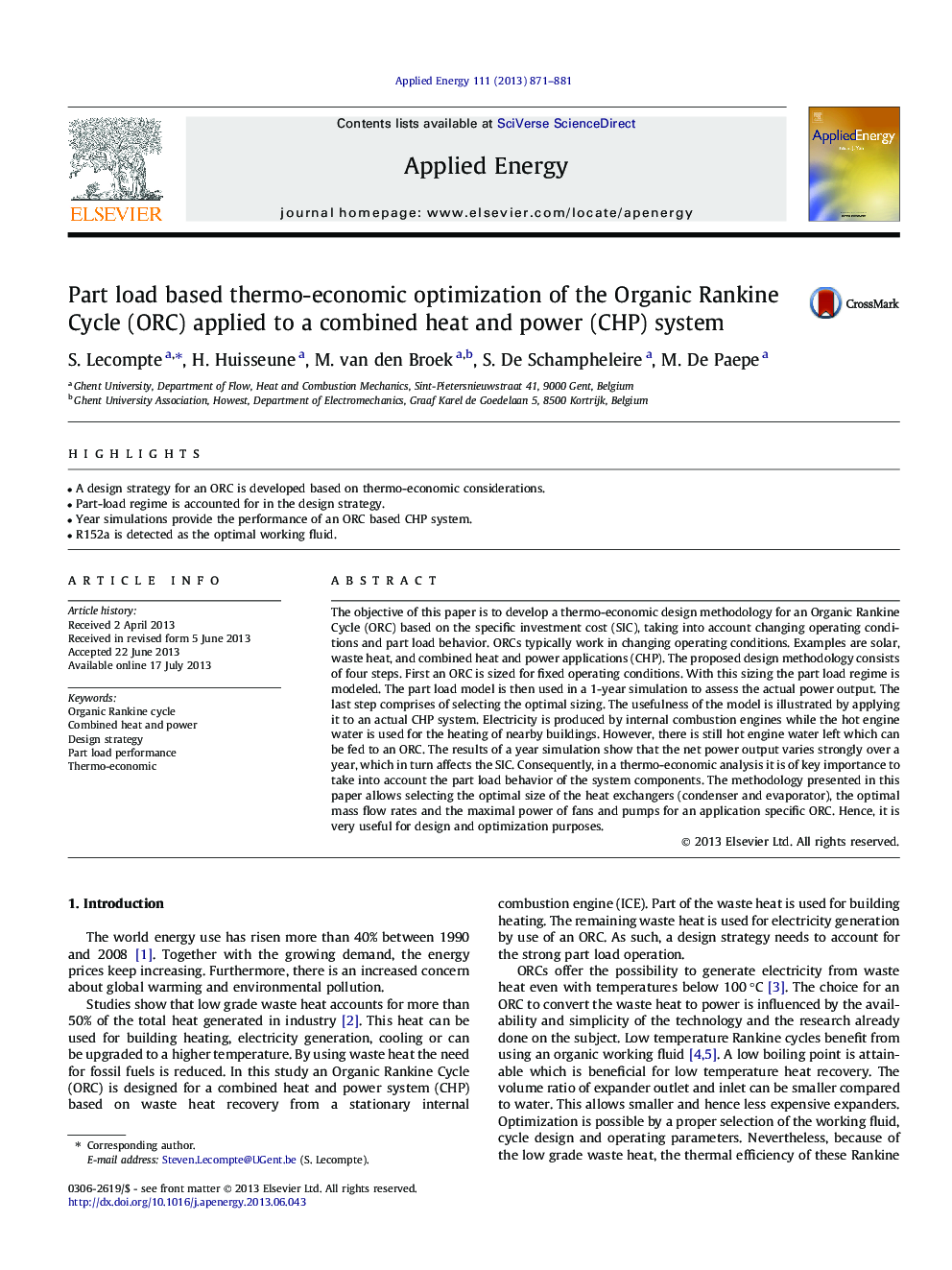| Article ID | Journal | Published Year | Pages | File Type |
|---|---|---|---|---|
| 6692568 | Applied Energy | 2013 | 11 Pages |
Abstract
The objective of this paper is to develop a thermo-economic design methodology for an Organic Rankine Cycle (ORC) based on the specific investment cost (SIC), taking into account changing operating conditions and part load behavior. ORCs typically work in changing operating conditions. Examples are solar, waste heat, and combined heat and power applications (CHP). The proposed design methodology consists of four steps. First an ORC is sized for fixed operating conditions. With this sizing the part load regime is modeled. The part load model is then used in a 1-year simulation to assess the actual power output. The last step comprises of selecting the optimal sizing. The usefulness of the model is illustrated by applying it to an actual CHP system. Electricity is produced by internal combustion engines while the hot engine water is used for the heating of nearby buildings. However, there is still hot engine water left which can be fed to an ORC. The results of a year simulation show that the net power output varies strongly over a year, which in turn affects the SIC. Consequently, in a thermo-economic analysis it is of key importance to take into account the part load behavior of the system components. The methodology presented in this paper allows selecting the optimal size of the heat exchangers (condenser and evaporator), the optimal mass flow rates and the maximal power of fans and pumps for an application specific ORC. Hence, it is very useful for design and optimization purposes.
Keywords
Related Topics
Physical Sciences and Engineering
Energy
Energy Engineering and Power Technology
Authors
S. Lecompte, H. Huisseune, M. van den Broek, S. De Schampheleire, M. De Paepe,
